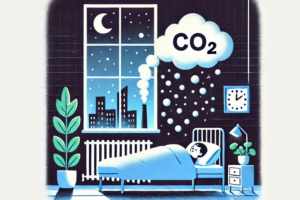I. CO2 is essential for life
Contrary to common belief, carbon dioxide (CO2) is crucial for sustaining life on Earth. It’s an essential component of photosynthesis, the process by which plants convert sunlight into energy, and it plays a vital role in regulating Earth’s temperature.
Now, as mostly in life: too much of something is seldom good…
II. Indoor CO2 levels can spike
CO2 levels can skyrocket, reaching concentrations much higher than outdoor levels. This buildup occurs in poorly ventilated spaces with many occupants or limited airflow, potentially leading to health issues like headaches and fatigue.
These spikes can be big, very big actually. Try and go measuring CO2 level in a badly ventilated classroom …
III. CO2 comes from natural sources too
While human activities like burning fossil fuels contribute to CO2 emissions, natural processes such as volcanic eruptions, wildfires, and biological respiration also release CO2 into the atmosphere. Understanding these natural sources is crucial for comprehending CO2 dynamics.
And guess what: even you reading this blog, and everyone else out there is breathing out CO2, all day long …
IV. CO2 monitoring is essential
Monitoring CO2 levels is vital for maintaining indoor air quality. High CO2 concentrations indicate poor ventilation and can result in discomfort and health problems. Regular monitoring helps ensure proper airflow and a healthier indoor environment.
Don’t worry, not always need to rebuild your entire ventilation (HVAC) system. Sometimes the solution is as simple as getting a Birdie from us!
V. CO2 affects more than just humans
Elevated CO2 levels don’t just impact human health; they can also harm pets and indoor plants. Pets may experience respiratory issues, while plants can suffer stunted growth or reduced vitality. Maintaining optimal CO2 levels benefits all inhabitants of indoor spaces.
… while this (surprising) fact is true, most of your plants probably don’t die from CO2 but because you forgot to water them!
Hope you have enjoyed these five facts – enjoy an indoor air pollutant-free home!
If you wish to learn more about Carbon, we can recommend you read the NASA Climate Kids page



